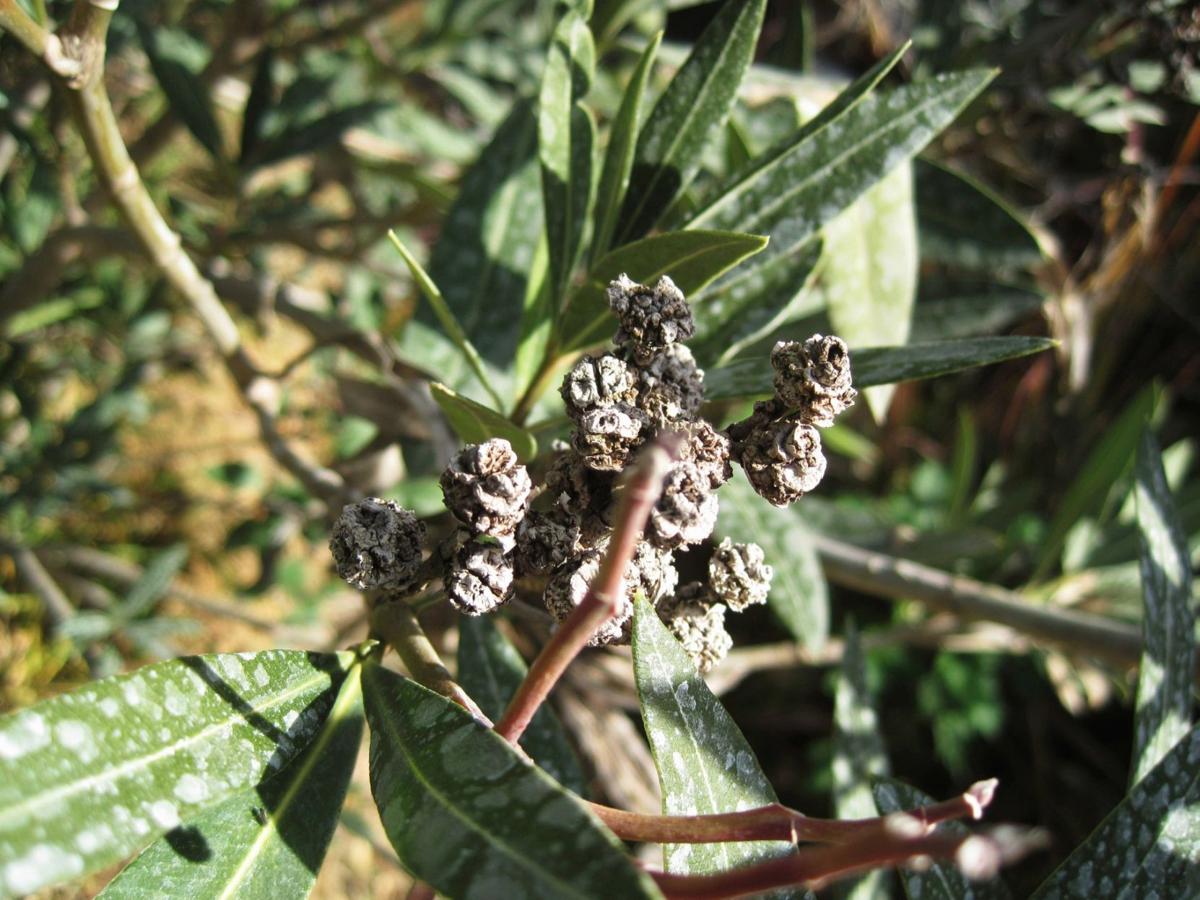Q: I am starting to see some odd growths on parts of my oleander hedge. I understand they are galls but I am not sure what to do about them.
A: Oleander (Nerium oleander) is one of the most popular evergreen shrubs in Arizona and the gall disease you are seeing is widespread. Oleander gall is caused by the bacterium Pseudomonas syringae savastanoi.
The galls occur on twigs, branches, leaves, flowers, and seedpods. Initially galls appear as small protuberances that subsequently develop into wart-like growths with roughened, fissured surfaces. Galls vary in size but average about a half to 1 inch in diameter. Large galls are usually made up of several small galls that have grown together.
Galls are the result of the growth and multiplication of the bacterium. The bacteria enter and infect oleanders through leaf and blossom scars, wounds produced by pruning, frost injury, and natural openings. Rain, sprinkler water, and pruning tools can spread bacteria from diseased to healthy plants.
When purchasing oleanders, examine them carefully to be sure they are free of galls. The vast majority of nursery stock is free from disease but prevention is always the most effective method of disease control. For diseased oleanders, prune out infected plant parts and apply disinfection solution (a 10 percent solution of household bleach) to each cut surface.
Always dip pruning tools in the disinfectant solution between cuts to reduce the possibility of spreading the bacteria. Pruning operations should be conducted during the dry seasons to avoid infection of wounds. Avoid sprinkler irrigation. Severe infection of large shrubs is difficult to control by selective pruning. If the entire shrub is cut down, the new succulent growth is extremely susceptible to infection. In certain situations, removal of the diseased plant and replanting may be the best method of control.
Peter L. Warren is the urban horticulture agent for the Pima County Cooperative Extension and the University of Arizona. Questions may be emailed to plwarren@cals.arizona.edu.





